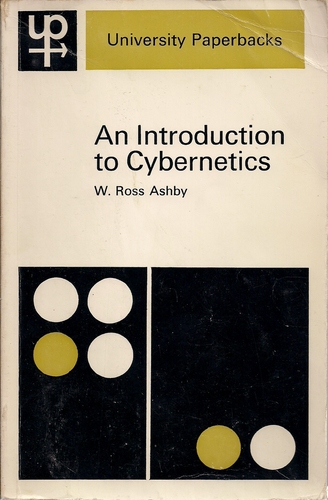Niklas Luhmann: The Reality of the Mass Media (1995/2000)
Filed under book | Tags: · autopoiesis, communication, cybernetics, information, mass media, media theory, recursion, social science, systems theory, theory of communication

“In The Reality of the Mass Media, Luhmann extends his theory of social systems — applied in his earlier works to the economy, the political system, art, religion, the sciences, and law — to an examination of the role of mass media in the construction of social reality.
Luhmann argues that the system of mass media is a set of recursive, self-referential programs of communication, whose functions are not determined by the external values of truthfulness, objectivity, or knowledge, nor by specific social interests or political directives. Rather, he contends that the system of mass media is regulated by the internal code information/noninformation, which enables the system to select its information (news) from its own environment and to communicate this information in accordance with its own reflexive criteria.
Despite its self-referential quality, Luhmann describes the mass media as one of the key cognitive systems of modern society, by means of which society constructs the illusion of its own reality. The reality of mass media, he argues, allows societies to process information without destabilizing social roles or overburdening social actors. It forms a broad reservoir (memory) of options for the future coordination of action, and it provides parameters for the stabilization of political reproduction of society, as it produces a continuous self-description of the world around which modern society can orient itself.
In his discussion of mass media, Luhmann elaborates a theory of communication in which communication is seen not as the act of a particular consciousness, nor the medium of integrative social norms, but merely the technical codes through which systemic operations arrange and perpetuate themselves.”
First published as Die Realität der Massenmedien, Westdeutscher Verlag, 1995.
Translated by Kathleen Cross
Published by Stanford University Press, 2000
ISBN 0804740771, 9780804740777
154 pages
Key terms: mass media, second-order cybernetics, autopoiesis, Heinz von Foerster, autopoietic, Laws of Form, Elisabeth Noelle-Neumann, constructivist epistemology, Gregory Bateson, recursive, Spencer Brown, Katherine Hayles, Michel Serres, Baltasar Gracian, Amos Tversky, Hans Ulrich Gumbrecht, munication, Ludwig Tieck
PDF (updated on 2012-7-17)
Comment (0)Eugene Thacker: Biomedia (2004)
Filed under book | Tags: · autopoiesis, bioethics, bioinformatics, biotechnology, genetics, nanotechnology, posthuman, systems theory

As biotechnology defines the new millennium, genetic codes and computer codes increasingly merge-life understood as data, flesh rendered programmable. Where this trend will take us, and what it might mean, is what concerns Eugene Thacker in this timely book, a penetrating look into the intersection of molecular biology and computer science in our day and its likely ramifications for the future.
Integrating approaches from science and media studies, Biomedia is a critical analysis of research fields that explore relationships between biologies and technologies, between genetic and computer “codes.” In doing so, the book looks beyond the familiar examples of cloning, genetic engineering, and gene therapy-fields based on the centrality of DNA or genes-to emerging fields in which “life” is often understood as “information.” Focusing especially on interactions between genetic and computer codes, or between “life” and “information,” Thacker shows how each kind of “body” produced-from biochip to DNA computer-demonstrates how molecular biology and computer science are interwoven to provide unique means of understanding and controlling living matter.
Throughout, Thacker provides in-depth accounts of theoretical issues implicit in biotechnical artifacts-issues that arise in the fields of bioinformatics, proteomics, systems biology, and biocomputing. Research in biotechnology, Biomedia suggests, flouts our assumptions about the division between biological and technological systems. New ways of thinking about this division are needed if we are to understand the cultural, social, and philosophical dimensions of such research, and this book marks a significant advance in the coming intellectual revolution.
Publisher University of Minnesota Press, 2004
ISBN 0816643520, 9780816643523
226 pages
Key terms: bioinformatics, bioMEMS, nanomedicine, DNA computer, bioethics, systems biology, nanotechnology, base pair, molecular biology, biotechnology, biocomputing, DNA chip, systems theory, posthuman, autopoiesis, bio-ethics, proteomics, programmable matter, wet lab, Bertalanffy
PDF (updated on 2013-3-16)
Comment (0)W. Ross Ashby: An Introduction to Cybernetics (1957–) [EN, PT]
Filed under book | Tags: · cybernetics, machine, systems theory

“W. Ross Ashby is one of the founding fathers of both cybernetics and systems theory. He developed such fundamental ideas as the homeostat, the law of requisite variety, the principle of self-organization, and the principle of regulatory models. Many of these insights were already proposed in the 1940’s and 1950’s, long before the presently propular “complex adaptive systems” approach arrived at very similar conclusions. Whereas the concepts surrounding the complexity movement are often complicated and confuse, Ashby’s ideas are surprisingly clear and simple, yet deep and universal.
This elegance of thought is illustrated in particular by the present book, which is still the only real textbook on cybernetics (and, one might add, system theory). It explains the basic principles with concrete examples, elementary mathematics and exercises for the reader. It does not require any mathematics beyond the basic high school level. Although simple, the book formulates principles at a high level of abstraction. For more concrete and extensive illustrations of systems principles, you may refer to other books, The Macroscope and The Phenomenon of Science. For a similar abstract, high-level, but technically simple approach, this time to physics, you can check Representation and Change.” (source)
Key words and phrases: entropy, transducer, Markov chain, cybernetics, isomorphic, dynamic system, Black Box theory, equilibrium, cerebral cortex, channel capacity, homomorphism, homeostat, machine of desired, degrees of freedom, ovum, diagram of immediate, logarithmically, Markovian machine, Shannon’s theorem, servo-mechanism
Publisher John Wiley and Sons, 1957
250 pages
An Introduction to Cybernetics (English, 1957)
Introdução à cibernetica (Portuguese, trans. Gita K. Ghinzberg, 1970, added on 2013-8-10)

